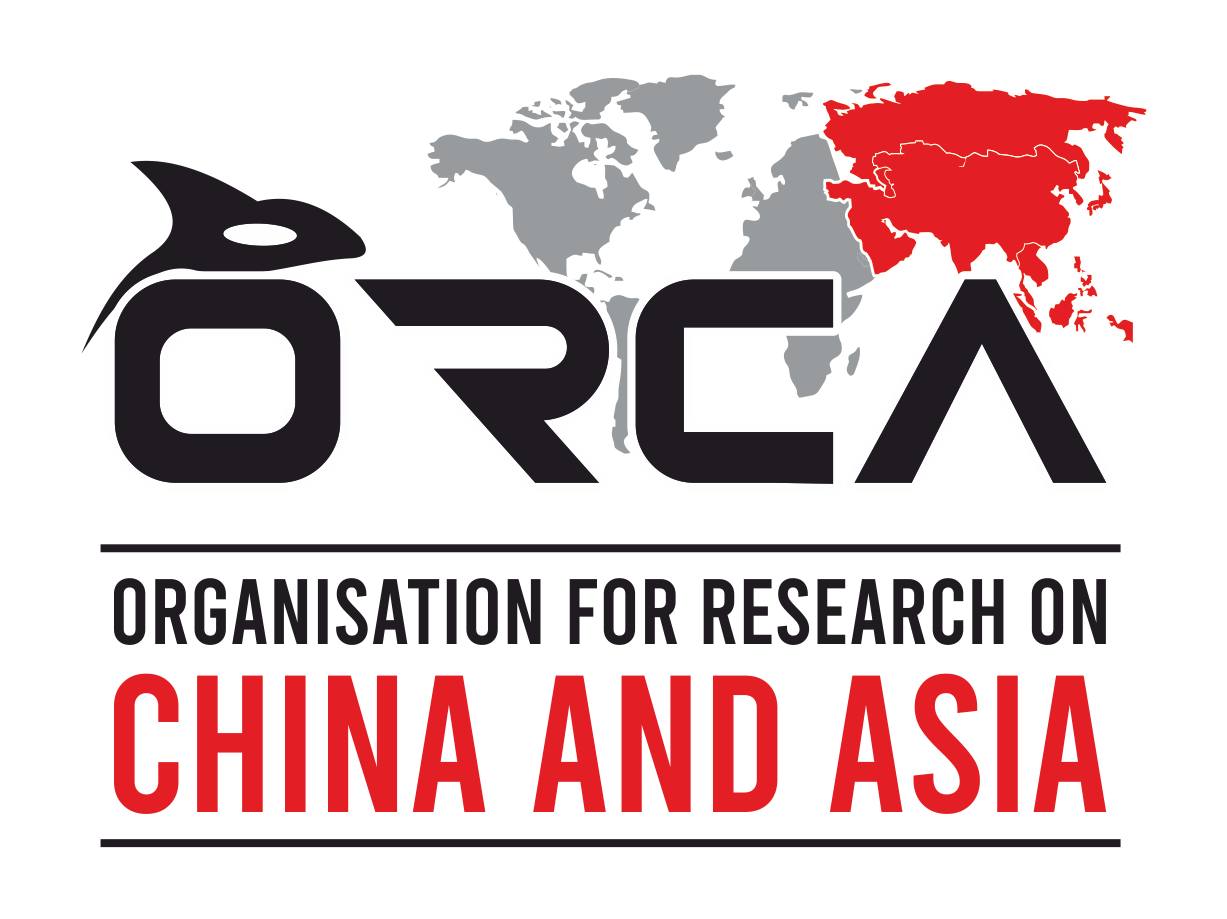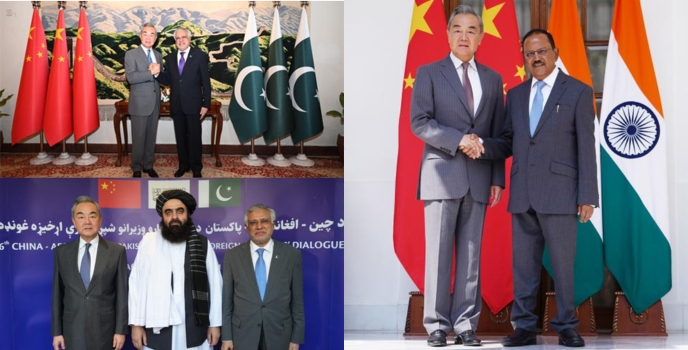Wang Yi’s recent visit to India highlighted gradual, yet cautious progress towards normalisation in some aspects of bilateral ties since the 2020 Galwan clashes. However, his subsequent engagements in Pakistan and Afghanistan in the same trip have again highlighted the broader complexity of the ‘China challenge’ for India. The three-nation tour illustrated Beijing’s calibrated South Asia strategy—seeking to maintain manageable ties with New Delhi, while simultaneously consolidating influence in neighbouring countries to reshape regional dynamics, often at the expense of Indian interests.
The focus of his India visit was on creating a conducive environment for finding some mechanism to manage the boundary dispute and thereby open up engagements in other domains, especially amidst strained India-US ties. On the other hand, his visits to Pakistan for the Foreign Ministers’ Strategic Dialogue, and to Afghanistan for the sixth trilateral summit, were driven by multiple objectives such as securing its investments in China-Pakistan Economic Corridor (CPEC) and deepening its role in the regional security architecture. These visits, coupled with other meeting arrangements with South Asian countries in the past few months through Shanghai Cooperation Organisation (SCO) Ministerial Summits, China-Pakistan-Bangladesh Trilateral Summit, and China-South Asia Cooperation Forum, indicate Beijing’s growing emphasis on South Asia in its peripheral diplomacy. However, while Wang Yi’s South Asia trip created high optics vis-à-vis China’s South Asia strategy, their tangible results seem to be meagre owing to enduring challenges that China faces in the politically unstable neighbourhood.
Optics and Reality of India-China Relations
Structural differences between India and China with regards to resolution of bilateral tensions have delayed normalisation of ties for long, which was also reflected during Wang Yi’s meetings with his Indian counterparts. Importantly, India’s emphasis on border peace and tranquillity as a precondition for boosting ties in other domains, besides other security and economic concerns, has not found resonance with the Chinese position which focuses on dealing with border disputes separately.
During this August state-visit as well, in Wang Yi’s recent talks with Indian External Affairs Minister S. Jaishankar, the primary focus remained on addressing economic and trade issues. However, no concrete measures were adopted, largely due to the slow progress in the disengagement process. In this regard, Indian media reported lifting of export restrictions on fertilizers, rare earth materials and tunnel boring machines just before the Wang-Doval meeting as an early indicator of normalisation of ties. Contrary to this claim, China’s Foreign Ministry spokesperson refused to confirm this development, highlighting the preference on maintaining ambiguity and using its supply chain dominance as a bargaining tool in bilateral negotiations. Moreover, uncomfortable issues for either side such as Pakistan-sponsored cross-border terrorism or Taiwan issue also led to divergences in press statements issued by both countries.
Amidst this challenging scenario, some progress towards peaceful management of the border dispute such as creation of an expert group and General-level mechanism in Eastern and Middle sectors is certainly appreciable. However, given the past actions by China, India is mindful of the fact that these developments currently only project positive optics as the ground reality may not necessarily reflect diplomatic decisions and rhetoric. In the economic domain too, as India showed willingness to reach agreement on resumption of direct flights, border trade and tourism, Chinese investments inflow in India will only be gradually resumed despite calls from the Indian business sector in its support, reflecting trust deficit between both countries.
Constraints of China’s Peripheral Diplomacy
Adding to the bilateral mistrust between India and China was Wang Yi’s next stop in Pakistan after his Delhi visit, re-affirming that “traditional friendship between China and Pakistan remains unshakable and unbreakable” despite global instability. As India’s apprehensions about China’s diplomatic and military equipment support to Pakistan during Operation Sindoor have already been made clear among India’s scholarly community, the optics of his Islamabad visit can further add to Delhi’s concerns about Chinese ambitions in its periphery.
Furthermore, Wang’s Kabul visit for the 6th trilateral summit also aimed at fulfilling multiple goals, with a broader objective to reshape regional security architecture. Firstly, China’s constant push to include Afghanistan into the CPEC since the third trilateral summit in 2019 stems from its need to establish a strong security presence under the guise of protection of its economic interests. Secondly, China considers cross-border activities conducted by some of the Afghanistan-based groups as a direct threat to its regional interests which have led to financial and human losses. Thus, one of the priority focuses of this trilateral has been on creating a joint counter-terrorism mechanism to curb these activities. Similarly, Chinese readouts on high-level meetings with Pakistan in the past few years have found a recurrent mention of efforts needed to “ensure the safety of Chinese personnel, projects and institutions in Pakistan”, highlighting its persistent vulnerability in the region. Thirdly, China’s ambitions to be a primary actor in the region are visible from its efforts to mediate between Pakistan and Afghanistan as well as actions like the Tunxi initiative to position itself as a primary contributor to Afghanistan’s reconstruction efforts.
While these objectives find place in the official statement on the trilateral summit issued by Xinhua, no substantial agreements were signed including the one on the extension of CPEC. However, as per Chinese reports, Pakistan’s PM Sharif is expected to formally launch CPEC 2.0 later this month in China, which may boost prospects of Afghanistan’s inclusion.
Yet, besides its divergences on several issues with Pakistan, Afghanistan has sought to diversify its relations with other regional powers, including with India. Moreover, the recent cancellation of a Chinese oilfield contract by Afghanistan further signals resistance that can potentially delay China’s CPEC expansion and ambitions to become the major power engaged in Afghanistan after the US withdrawal. The recent Wang Yi visit, while demonstrating China’s proactive diplomacy with Taliban on one hand, seems to have failed to alleviate these fears which can continue to restrict Chinese advances in this politically volatile region.
Converging India’s China and South Asia Strategies
Wang’s visit to South Asia has once again reinforced that India’s China strategy at the bilateral level is closely linked to its South Asia strategy as China’s actions in the region have been increasingly affecting bilateral relations. For instance, despite several challenges, the potential extension of China’s CPEC into Afghanistan and proposed projects such as Kabul-Peshawar motorway or its investments in Wakhan corridor is likely to expand China’s regional security presence, which can deepen concerns for India’s internal security at Western borders. Such moves can also elevate CPEC’s centrality in Beijing’s South Asia strategy and can further complicate India’s principled opposition to the initiative which directly impacts India’s sovereignty.
These concerns, in addition to China-Pakistan All-weather Friendship, can limit the success of confidence-building measures between India and China, affecting the development of bilateral ties. Similarly, it will not just affect India’s regional interests, but also shape its overall perception of China more as an adversary than a reliable partner. Thus, similar to China’s South Asia strategy which often undermines India’s interests, India must also recalibrate its broader China strategy to include its actions in South Asia which directly affect its own interests. Nonetheless, while Wang Yi’s India visit and PM Modi’s upcoming China visit may signal a degree of creeping normalcy at the bilateral level, Beijing’s intensifying footprint in South Asia is set to complicate regional competition, requiring careful assessment of its implications for the overall India-China relations.
Image Source: Xinhua



Author
Omkar Bhole
Omkar Bhole is a Senior Research Associate at the Organisation for Research on China and Asia (ORCA). He has studied Chinese language up to HSK4 and completed Masters in China Studies from Somaiya University, Mumbai. He has previously worked as a Chinese language instructor in Mumbai and Pune. His research interests are India’s neighbourhood policy, China’s foreign policy in South Asia, economic transformation and current dynamics of Chinese economy and its domestic politics. He was previously associated with the Institute of Chinese Studies (ICS) and What China Reads. He has also presented papers at several conferences on China. Omkar is currently working on understanding China’s Digital Yuan initiative and its implications for the South Asian region including India. He can be reached at [email protected] and @bhole_omkar on Twitter.